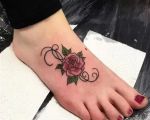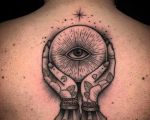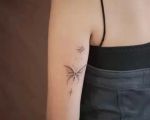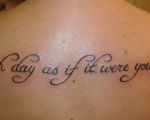Understanding Tattoo Pricing: What You’re Paying For
May 17, 2025
Understanding Tattoo Pricing and What You’re Paying For
1. The Basics of Tattoo Pricing
If you’re considering getting a tattoo, one of the first things on your mind is likely how much it will cost. Understanding tattoo pricing can be a bit confusing, as the price varies based on several factors. It’s important to know what you’re paying for, especially since tattoos are a long-term investment in your body and personal expression.
Tattoo prices can range widely, depending on the artist, the design, the size, and the location of the studio. On average, tattoos can cost anywhere from $50 to several thousand dollars. But what exactly goes into the price? Let’s break it down.
2. Factors That Influence Tattoo Pricing
2.1. Tattoo Artist Experience and Skill
One of the biggest factors in determining tattoo pricing is the experience and skill level of the artist. Highly experienced artists with a well-established reputation typically charge more for their work. They bring years of practice, technical expertise, and a distinct style to their designs, which justifies the higher rates.
For example, if you’re getting a custom tattoo that requires intricate detailing and shading, you’ll likely pay more for the time and effort that goes into creating the design. Artists with more experience are able to execute more complex designs with precision, which directly impacts the price.
2.2. Tattoo Design and Size
The design of your tattoo plays a significant role in its pricing. Smaller tattoos are typically less expensive because they require less time to complete. However, larger tattoos, especially those that cover large areas like the back, legs, or arms, can take several hours to complete, thus increasing the cost.
Custom designs, in particular, may cost more than flash tattoos (pre-designed tattoos that you can pick from a studio’s catalog). Custom tattoos often involve a design consultation and a more intricate process. If you want a truly unique piece, expect to pay for the extra time and creative work involved in bringing your vision to life.
2.3. Location of the Tattoo Studio
Another factor to consider is the location of the tattoo studio. Tattoo shops in big cities or upscale neighborhoods often charge higher rates due to the cost of living and operating in those areas. This can result in an increase in tattoo prices. On the other hand, studios in smaller towns or less expensive areas may have lower rates.
It’s also important to note that some locations may offer different pricing based on the cost of materials and overhead. High-end studios may charge more for their comfortable environments and premium services.
3. Time and Complexity
3.1. Hourly Rates vs. Flat Rates
Tattoo pricing can be either hourly or flat-rate, depending on the artist and the shop. Hourly rates typically range from $100 to $250 per hour, with some highly sought-after artists charging more. If you’re getting a large piece or something that will take several hours, the hourly rate will determine your total price.
For smaller tattoos or designs that can be completed in a short amount of time, some shops may offer a flat rate. This is common for simple tattoos or tattoos with a set design and limited complexity.
3.2. Color and Detail
The complexity of a tattoo also depends on the detail and color involved. Black-and-gray tattoos tend to be less expensive than colorful tattoos because color tattoos require additional work, such as multiple layers of ink and extra time for precision. Designs with intricate patterns or lots of shading also tend to cost more due to the time and expertise required.
4. Hidden Costs of Tattoos
4.1. Aftercare and Touch-ups
When getting a tattoo, you should also consider the cost of aftercare. Aftercare products, like specialized lotions or ointments, are often recommended by the artist to ensure proper healing. Additionally, you may need to pay for touch-ups after the tattoo heals, especially if certain areas fade over time or require more attention. Some studios offer free touch-ups within a certain time frame, while others may charge extra.
4.2. Gratuities
Another cost to keep in mind is tipping. While tipping isn’t mandatory, it’s considered a nice gesture to show your appreciation for the artist’s hard work. Tipping is generally about 10-20% of the total price of the tattoo. It’s not unusual for artists to expect tips for their exceptional service.
5. How to Budget for Your Tattoo
5.1. Do Your Research
If you’re planning on getting a tattoo, it’s important to do your research. Look at different artists and studios in your area to get a sense of the average pricing. Keep in mind that quality tattoos often cost more, but you get what you pay for. Don’t skimp on price when it comes to tattoos, as this can result in lower-quality work or even infection risks from unsanitary conditions.
5.2. Consider the Long-Term Investment
Remember, a tattoo is a lifelong investment. While it might be tempting to go with a cheaper option, choosing a more skilled and experienced artist will ensure that you get a tattoo that you’ll love for years to come. The more detailed and well-done your tattoo is, the longer it will last, making it worth the extra cost.
6. Final Thoughts
Understanding tattoo pricing is crucial before committing to any design. You’ll want to be prepared for the costs and to know exactly what you’re paying for, whether it’s the artist’s time, skill, or the design itself. With proper research and planning, you’ll be able to get a tattoo that suits your budget while also ensuring you receive the best quality possible. Happy tattooing!







